Another Uni project while I try to get some pictures and screencaps from my working life.
As a major project for my Digital Media degree, I wanted to make something that would let me use my whole skillset of electronics, graphics, sound and programming. At the time I was doing a lot of reading about computer programs that used algorithms based on living creatures, known as alife programs. It was my intention to use this kind of programming to make lifelike growing plants that could be guided or manipulated with the mouse pointer. The simulation I developed used an L-System to create a plant shape from small stick elements that could be linked to one or two "child" elements, depending on a set of rules that decided which sticks got to breed a child stick. Every so often, the child would be a flower, of which there were several kinds to add variety.
When I decided to develop this into a major project, I considered ways of making the simulation more immersive. I thought about having the plants projected onto a wall, or spanned across several screens, with sensors tracking visitors across the room, but finally settled on the idea of having the plants projected onto the floor from above, with a large floor sensor to tell the computer where the people were standing.
The sensor consisted of two layers: a hard base with metal strips running across it, and a soft upper layer with wires running perpendicular to the metal strips.
The upper foam layer had small metal buttons attached to its underside and connected to the wires. When stepped on, these buttons would form a circuit between one row of the upper wire and one column of the lower metal. By checking which rows and columns were touching, the control circuit could pinpoint where people were standing.
I used a prebuilt AVR microcontroller board to read the floor sensor, as it was extremely easy to program and wire up. Eight of the AVR's I/O pins were connected to the bottom layer of the sensor, and eight to the top layer. By sending signals to each of these rows in turn, the chip could create a grid in its memory of the positions being stepped on. It would then send this grid to the computer's serial port.
The system was put in place for the COFA end of year show in 2003. The PC visible in the background ran the program, and the projector next to the PC had a small shaving mirror attached to the front, reflecting the image up to the ceiling, where a larger mirror was hanging. This mirror then reflected the image from directly above the people standing on the special floor, minimising shadows.
As people walked across the designated floor area, the plants would spring into life and begin to grow and coil around their feet. The speakers seen in the image above were used to play a series of Japanese flute samples played by my good friend Naomi Hamilton. The music would change depending on the number of people detected on the floor. From the quiet, slow tunes played in an empty room, more hectic passages would play as the sensor was weighed down by more feet. This added to the atmosphere of being in a dark space with wriggling, neon-coloured plants growing around one's feet.
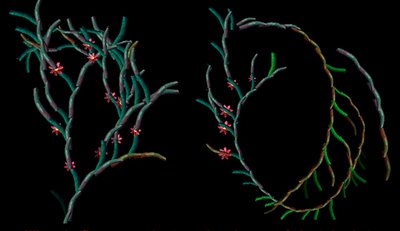
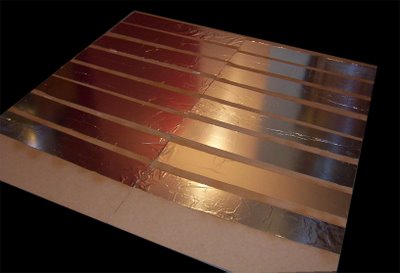
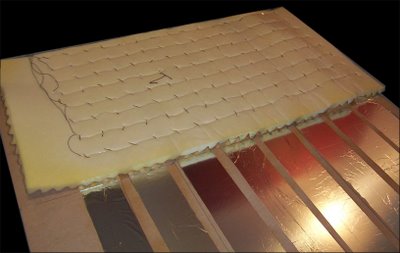


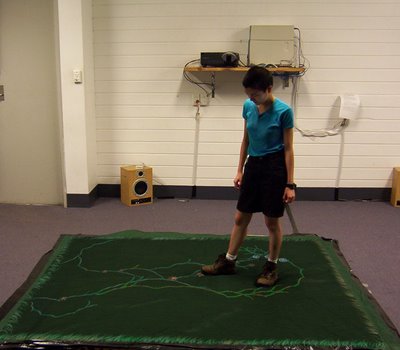
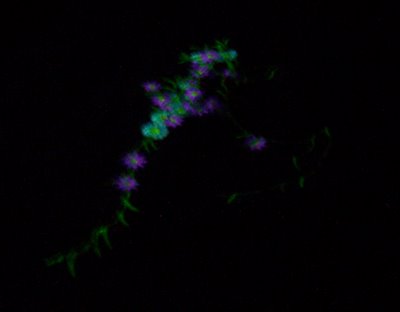
Comments